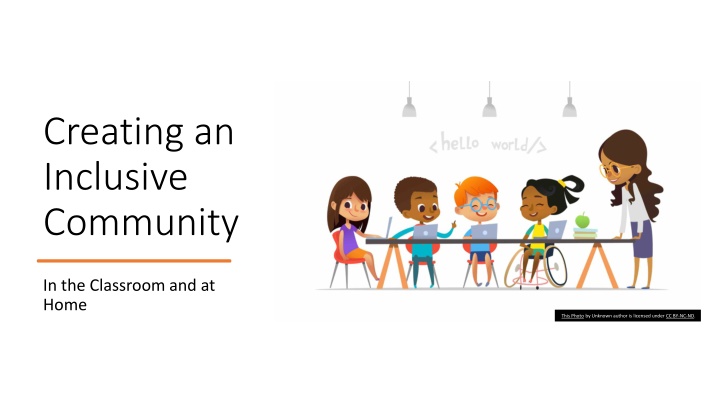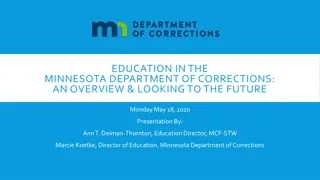
Creating an Inclusive Community: Embracing Diversity and Disability
Learn how to promote inclusivity in the classroom and at home by celebrating differences, understanding inclusion, and supporting individuals with disabilities. Discover practical tips, insights, and resources for fostering a welcoming environment for all. Reach out to our community health specialists for further guidance and support.
Download Presentation

Please find below an Image/Link to download the presentation.
The content on the website is provided AS IS for your information and personal use only. It may not be sold, licensed, or shared on other websites without obtaining consent from the author. If you encounter any issues during the download, it is possible that the publisher has removed the file from their server.
You are allowed to download the files provided on this website for personal or commercial use, subject to the condition that they are used lawfully. All files are the property of their respective owners.
The content on the website is provided AS IS for your information and personal use only. It may not be sold, licensed, or shared on other websites without obtaining consent from the author.
E N D
Presentation Transcript
Creating an Inclusive Community In the Classroom and at Home This Photo by Unknown author is licensed under CC BY-NC-ND.
Let's Celebrate Our Differences Having a disability just means that someone learns, plays, moves, eats, communicates, or thinks differently. Disability is not a bad thing. People with disabilities add to the diversity of our community. There are all kinds of disabilities, and any person can develop a disability at any age.
Just Ask by Sonia Sotomayor
What are some things you can do to be inclusive in the classroom? What is Inclusion? Saying Hi! Wider aisles Leaving space at a table for wheelchair users Asking if your classmate needs help Making classroom supplies are within reach for all
How Does it Feel to be Included? Does it make you feel good or bad?
How Does it Feel to be Excluded or Left Out? Does it make you feel good or bad?
Including Your Classmate with a Disability Invite them to join you, be their friend. Don't assume they need help, ask before helping. Don't touch a person's mobility device. Talk to them, not their helper Be patient, they might need extra time Remember the Golden Rule: Treat others the way you want to be treated. People with disabilities have the same wants and needs as those without a disability, it just might look a little different, and that's okay.
Language: What Words Should You Use? It depends on the person. For example: Autistic vs. Person with Autism.
Feel free to send us follow up questions from students and teachers to us at our emails Jasmine McCrary (Community Health Resource Specialist): jmccrary@eitas.org Malinda Barnett (Supervisor of Community Outreach Department): mbarnett@eitas.org Nicole Noblet (Peer Resource Specialist): nnoblet@eitas.org


